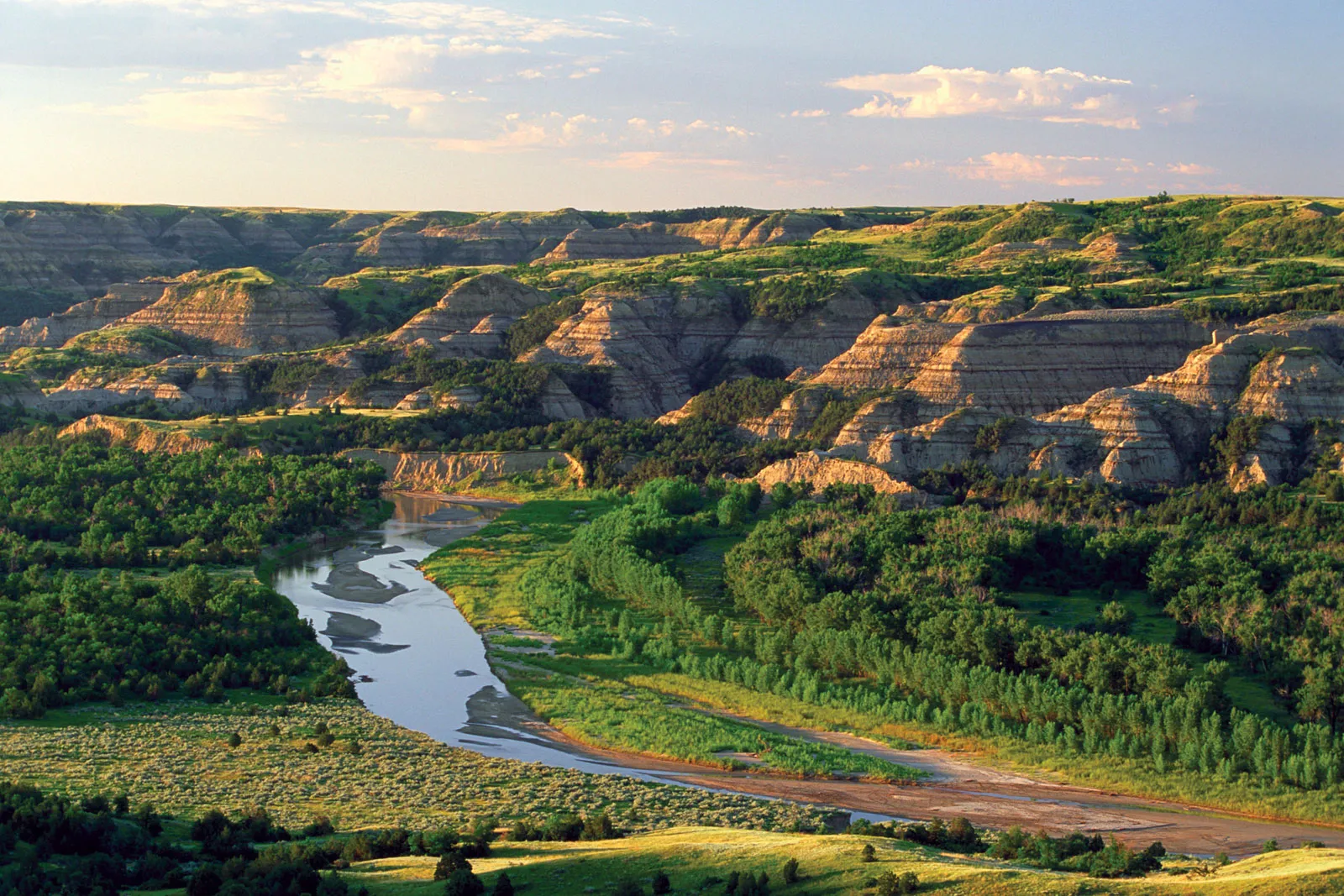A lease agreement is a legally binding contract between a landlord and a tenant, outlining the terms and conditions of renting a property. In North Dakota, a lease agreement is essential for both landlords and tenants as it helps establish a clear understanding of their responsibilities and obligations. This 2024 guide will provide an overview of North Dakota lease agreements and the key components to include in one.
A North Dakota lease agreement is a document that outlines the terms and conditions of a rental agreement between a landlord and a tenant in the state of North Dakota. It includes details such as the rental property, lease duration, rent amount, and other important clauses. This agreement serves as a legal protection for both parties and ensures a smooth rental experience.
A lease agreement is essential in North Dakota as it helps establish the rights and responsibilities of both landlords and tenants. It also helps prevent disputes and misunderstandings that may arise during the tenancy period. Additionally, a lease agreement is legally binding and can be used as evidence in case of any conflicts or legal actions.
The key components of a North Dakota lease agreement include:
- Parties Involved: This includes the names and contact information of the landlord and tenant(s).
- Property Description: This should include the address and a detailed description of the rental property.
- Lease Terms and Conditions: This section outlines the rules and regulations that both parties must abide by during the tenancy.
- Rent and Payment Details: This includes the amount of rent, due date, and acceptable payment methods.
- Security Deposit: This states the amount of the security deposit, how it will be used, and when it will be returned.
- Maintenance and Repairs: This outlines the responsibilities of the landlord and tenant for maintaining the rental property.
- Termination and Renewal: This section specifies the conditions for terminating or renewing the lease agreement.
There are different types of North Dakota lease agreements, including residential lease agreements, commercial lease agreements, month-to-month lease agreements, and fixed-term lease agreements. Each type has its own set of conditions and requirements, so it is important to choose the right one based on your specific rental situation.
To create a North Dakota lease agreement, follow these steps:
- Gather Necessary Information: You will need information such as the names and contact details of both parties, property description, lease terms, and any other relevant information.
- Use a Template or Hire a Lawyer: You can either use a pre-made template or seek the help of a lawyer to draft a customized lease agreement.
- Review and Sign the Agreement: Before signing, make sure to carefully review the agreement and clarify any doubts or concerns with the other party.
It is essential to consider the legal aspects when creating a North Dakota lease agreement, including:
- North Dakota Landlord-Tenant Laws: Familiarize yourself with the state’s laws and regulations regarding landlord-tenant relationships.
- Fair Housing Laws: Make sure to comply with federal and state fair housing laws to avoid any discrimination claims.
- Local Ordinances: Check for any local laws or regulations that may apply to your specific rental property.
Common mistakes to avoid in a North Dakota lease agreement include:
- Not Clearly Defining Lease Terms and Conditions: Make sure to include all important details and be specific about expectations and responsibilities.
- Not Including Important Clauses: Remember to include clauses for important matters such as pets, repairs, and entry to the rental property.
- Not Following Legal Requirements: Failure to comply with state and federal laws can result in legal consequences, so make sure to do your research and follow all legal requirements.
In conclusion, a North Dakota lease agreement is a crucial document for both landlords and tenants in the state. It outlines the terms and conditions of renting a property and helps prevent disputes and misunderstandings. By following the guidelines and avoiding common mistakes, you can create a comprehensive and legally binding lease agreement for a smooth rental experience. References to state laws and local ordinances
What Is a Lease Agreement?
A lease agreement is a legally binding contract between a landlord and a tenant, outlining the terms and conditions for renting a property. It includes details such as the duration of the lease, rental amount, security deposit, and responsibilities of both parties. Understanding what is a lease agreement is crucial for both landlords and tenants to protect their rights and ensure a smooth tenancy experience. For example, tenants should carefully review the lease terms before signing.
What Is a North Dakota Lease Agreement?
A North Dakota lease agreement is a legally binding contract between a landlord and a tenant that outlines the terms and conditions for renting a property. This important document includes information such as the duration of the lease, rent amount, security deposit, and any specific rules or provisions. It is essential for both landlords and tenants to understand what a North Dakota lease agreement is in order to ensure clarity and compliance with state laws.
Why Is a Lease Agreement Important in North Dakota?
A lease agreement is essential in North Dakota as it outlines the terms and conditions for renting a property. It is crucial in clarifying the rights and responsibilities of both the landlord and the tenant, ensuring a mutual understanding of the rental arrangement. Moreover, it serves as a vital legal document that can be referred to in the event of disputes, providing protection to both parties involved in the leasing process.
What Are the Key Components of a North Dakota Lease Agreement?
When entering into a lease agreement in North Dakota, it is essential to understand the key components that make up the contract. These components outline the rights and responsibilities of both the landlord and the tenant. In this section, we will discuss the parties involved, the property description, the lease terms and conditions, rent and payment details, security deposit requirements, maintenance and repair responsibilities, and the process for termination and renewal of the lease. Understanding these key components will ensure a smooth and mutually beneficial leasing experience.
1. Parties Involved
- Identify the landlord and tenant accurately.
- Include their legal names, contact details, and any additional parties involved in the agreement, such as property managers or co-signers.
- Specify the roles and responsibilities of each party clearly, including any specific duties or obligations outlined in the lease agreement.
Did you know? In North Dakota, landlords must return the security deposit, along with an itemized list of deductions, within 30 days of the lease termination.
2. Property Description
In a North Dakota lease agreement, the property description is a crucial element. It should comprehensively detail the property being leased, including its address, boundaries, and any included furnishings or amenities. Additionally, it may outline any restrictions on the property’s usage. For example, a commercial lease agreement may specify permitted business activities. An accurate property description ensures clarity and transparency, preventing misunderstandings between the parties involved.
Fact: North Dakota is the leading producer of spring wheat in the United States.
3. Lease Terms and Conditions
- Discuss Terms: Review and discuss all the lease terms and conditions with the landlord or tenant.
- Clarify Ambiguity: Seek clarification on any ambiguous clauses regarding the lease terms and conditions to avoid misunderstandings.
- Document Everything: It is important to document all agreed-upon terms in writing to ensure clarity and avoid disputes.
- Seek Legal Advice: If unsure about any of the lease terms and conditions, it is advisable to seek legal advice to ensure that they are fair and legally binding.
4. Rent and Payment Details
- Specify Rent Amount: Clearly state the monthly rent and any additional charges like utilities or parking fees.
- Payment Schedule: Outline the due date, accepted payment methods, and any late fees or grace periods.
- Security Deposit: Detail the amount, conditions for its return, and any deductions for damages.
- Rent Increase Clause: If applicable, define the conditions for rent adjustments during the lease term.
In 2024, North Dakota implemented stricter regulations to ensure transparency in rent and payment details, aiming to protect both landlords and tenants.
5. Security Deposit
- Have a conversation with the landlord about the security deposit amount.
- Closely examine the property for any existing damages.
- Take written documentation of any pre-existing conditions.
- Be aware of the terms for refunding the security deposit and any potential deductions.
Did you know? In North Dakota, the maximum security deposit allowed is one month’s rent for unfurnished properties and one and a half month’s rent for furnished properties.
6. Maintenance and Repairs
- Regularly inspect the property to identify any maintenance needs.
- Address any necessary repairs promptly to prevent further damage.
- Maintain detailed records of all maintenance and repair activities.
- Effectively communicate with tenants about maintenance schedules and access to the property.
- Ensure compliance with all legal requirements and regulations when performing maintenance and repairs.
Unfortunately, in the past, a property manager neglected to address a leaky faucet, resulting in significant water damage. This could have been avoided if proper attention was given to maintenance and repairs.
7. Termination and Renewal
- Review Lease Agreement: Thoroughly assess the terms and conditions for terminating and renewing the lease.
- Notice Period: Understand the required notice period for terminating or renewing the lease.
- Renewal Terms: Determine if the lease automatically renews or requires a new agreement.
- Communication: Maintain open and clear communication with the landlord regarding intentions for renewal or termination.
In a similar situation, a friend in North Dakota diligently reviewed their lease agreement, ensuring to communicate with the landlord well in advance to avoid any misunderstandings during the termination and renewal process.
What Are the Different Types of North Dakota Lease Agreements?
When it comes to leasing property in North Dakota, there are various types of lease agreements that landlords and tenants can enter into. In this section, we will discuss the different types of North Dakota lease agreements, including residential, commercial, month-to-month, and fixed-term leases. By understanding the unique characteristics and terms of each type, both landlords and tenants can make informed decisions about which lease agreement best suits their needs.
1. Residential Lease Agreement
Creating a residential lease agreement in North Dakota involves several important steps:
- Identify the parties involved, including the landlord and tenant.
- Describe the property thoroughly, including its address, unit number, and any specific features.
- Outline the terms and conditions of the lease, including its duration and any specific rules.
- Specify the rent amount, due date, acceptable payment methods, and consequences for late payments.
- Define the amount, use, and return conditions of the security deposit.
Pro-tip: It is always crucial to ensure that the lease agreement complies with North Dakota’s landlord-tenant laws to avoid any potential legal issues.
2. Commercial Lease Agreement
Creating a commercial lease agreement involves the following steps:
- Identify Parties: Clearly outline the details of the landlord and tenant.
- Property Description: Provide a comprehensive description of the commercial property being leased.
- Lease Terms and Conditions: Define the duration, permitted usage, and any restrictions.
- Rent and Payment Details: Specify the rent amount, due date, and acceptable payment methods.
- Security Deposit: State the amount of the security deposit and the conditions for its refund.
- Maintenance and Repairs: Outline responsibilities for property maintenance and repairs.
- Termination and Renewal: Detail the terms for lease termination and potential renewal options.
3. Month-to-Month Lease Agreement
- Research the laws regarding month-to-month lease agreements in North Dakota.
- Initiate communication with the landlord to propose a month-to-month lease agreement.
- Negotiate the terms of the lease, including rent and notice period.
- Make sure to document all agreements in a written contract signed by both parties.
4. Fixed-Term Lease Agreement
A fixed-term lease agreement is a rental contract that outlines a specific period for the lease, usually lasting for six months or one year. During the duration of the lease, both the landlord and tenant are legally obligated to follow the terms and conditions stated in the agreement. This type of contract provides stability for both parties, as it guarantees consistent tenancy and rental income without the need for frequent renegotiation.
How to Create a North Dakota Lease Agreement?
If you are a landlord or a tenant in North Dakota, creating a lease agreement is an essential step in establishing a successful rental relationship. But where do you start? In this section, we will guide you through the process of creating a North Dakota lease agreement. From gathering necessary information to reviewing and signing the final document, we’ll provide you with the necessary steps to ensure a smooth and legally binding agreement. Whether you choose to use a template or hire a lawyer, this guide will help you navigate the process with confidence.
1. Gather Necessary Information
- Identify parties involved: landlord, tenant, and any property management company.
- Collate property details: address, type of property, and any specific features or amenities.
- Document lease terms: duration, rent amount, payment schedule, and any additional conditions.
- Outline required documentation: bank statements, references, and identification.
A friend recently went through the process of gathering necessary information for a lease agreement. They carefully collected property details and lease terms, making sure all required documents were in place. As a result, the leasing process was smooth and efficient.
2. Use a Template or Hire a Lawyer
- Gather all necessary information, including parties involved, property description, lease terms and conditions, rent and payment details, security deposit, and maintenance and repairs.
- Decide whether to use a template from a reliable source or to hire a lawyer to draft the North Dakota lease agreement.
- Review and sign the agreement with all involved parties.
North Dakota lease agreements provide legal protection and clarity for both landlords and tenants, ensuring a smooth and successful tenancy relationship.
3. Review and Sign the Agreement
- Thoroughly review the entire lease agreement, paying close attention to all terms and conditions.
- Discuss any concerns or queries with the landlord for resolution.
- Once satisfied, sign the agreement and obtain a copy for personal records.
The process of signing agreements has been a vital aspect of legal and business transactions since ancient times, with written contracts being used to formalize agreements and ensure accountability.
What Are the Legal Considerations for a North Dakota Lease Agreement?
Before entering into a lease agreement in North Dakota, it is important to understand the legal considerations that come with it. This section will provide an overview of the various laws and regulations that landlords and tenants must abide by in the state. From North Dakota’s specific landlord-tenant laws to federal fair housing laws and local ordinances, we will discuss the key factors that should be taken into account when drafting and signing a lease agreement in North Dakota.
1. North Dakota Landlord-Tenant Laws
- Research: Study the specifics of 1. North Dakota landlord-tenant laws to fully understand your rights and obligations as a landlord or tenant.
- Consultation: Seek legal advice or guidance from reliable sources to properly interpret the complexities of these regulations.
- Documentation: Make sure all lease agreements align with the stipulations of 1. North Dakota landlord-tenant laws to prevent potential legal disputes.
- Compliance: Adhere to the prescribed guidelines and requirements stated in the 1. North Dakota landlord-tenant laws to ensure legal compliance.
2. Fair Housing Laws
- Discover the Fair Housing Act and its provisions.
- Comprehend the protected classes under fair housing laws.
- Investigate the specific fair housing regulations in North Dakota.
- Guarantee compliance with fair housing requirements when drafting lease agreements.
3. Local Ordinances
- Research: Investigate local ordinances regarding landlord-tenant regulations.
- Consultation: Seek legal advice to ensure compliance with specific local ordinances.
- Incorporation: Integrate the necessary provisions from local ordinances into the lease agreement.
- Review: Regularly review local ordinances for any updates or changes that may affect the lease agreement.
What Are the Common Mistakes to Avoid in a North Dakota Lease Agreement?
When it comes to creating a North Dakota lease agreement, it’s important to avoid common mistakes that can lead to legal disputes and financial losses. In this section, we will discuss the most common mistakes made in lease agreements in North Dakota and how to avoid them. From not clearly defining lease terms and conditions to neglecting important clauses and failing to follow legal requirements, we’ll cover everything you need to know to create a comprehensive and legally binding lease agreement.
1. Not Clearly Defining Lease Terms and Conditions
- 1. Review all lease terms thoroughly to fully understand all conditions, responsibilities, and restrictions.
- 2. Seek clarification on any unclear points from the landlord or a legal professional.
- 3. Document all agreements and amendments to the lease in writing for clarity and future reference.
Pro-tip: To avoid misunderstandings, it is important to keep detailed records of all communication and agreements related to lease terms.
2. Not Including Important Clauses
- Identify crucial clauses such as maintenance responsibilities, subletting, and pet policies to ensure the lease agreement is comprehensive.
- Consult legal resources or professionals to ensure that all necessary clauses are included.
- Review the lease agreement to guarantee that all essential terms, including those related to maintenance, subletting, and pets, are clearly stated.
3. Not Following Legal Requirements
- Consult a legal professional to ensure compliance with North Dakota landlord-tenant laws.
- Review and understand fair housing laws to prevent discrimination in lease agreements.
- Stay updated with local ordinances to adhere to specific regulations in the area.
Not following legal requirements can lead to complications in the leasing process and may result in unfair or unlawful agreements for both parties involved. It is crucial to stay informed and comply with all legal obligations to ensure a smooth and just leasing process.
Frequently Asked Questions
What are the tenant responsibilities when renting a property in North Dakota?
Tenants are responsible for paying rent on time, using the property appropriately, keeping it clean and safe, and not disturbing other tenants. They must also follow the terms of the lease agreement and any rules set by the landlord.
Can I have a service animal in my rental property in North Dakota?
Yes, tenants with disabilities have the right to keep a service animal in their living space, even if the property has a no-pets policy. However, the tenant must provide a medical note stating the need for the service animal.
Who is responsible for paying utility bills in a rental property in North Dakota?
Unless specified in the lease agreement, tenants are responsible for paying their own utility bills. Landlords are responsible for providing safe and working utilities, such as water, electricity, and heat.
Are tenants responsible for garbage removal in North Dakota rental properties?
Yes, tenants are responsible for disposing of their own garbage in designated containers. Landlords must provide adequate garbage containers and arrange for regular garbage removal.
What is considered normal wear and tear in a rental property in North Dakota?
Normal wear and tear refers to the natural deterioration or aging of a property, such as minor scuffs or marks on the walls. Landlords cannot deduct for these damages from the security deposit.
Can tenants be evicted for illegal activities in North Dakota?
Yes, tenants can be evicted for engaging in illegal activities on the rental property. This includes drug use, violence, and other criminal acts. Landlords can terminate the lease and evict the tenant with proper notice and legal proceedings.
Dave is a seasoned real estate investor with over 12 years of experience in the industry. Specializing in single-family residential real estate, David’s strategic approach combines market analysis, financial acumen, and a deep understanding of urban development trends to maximize investment returns.










